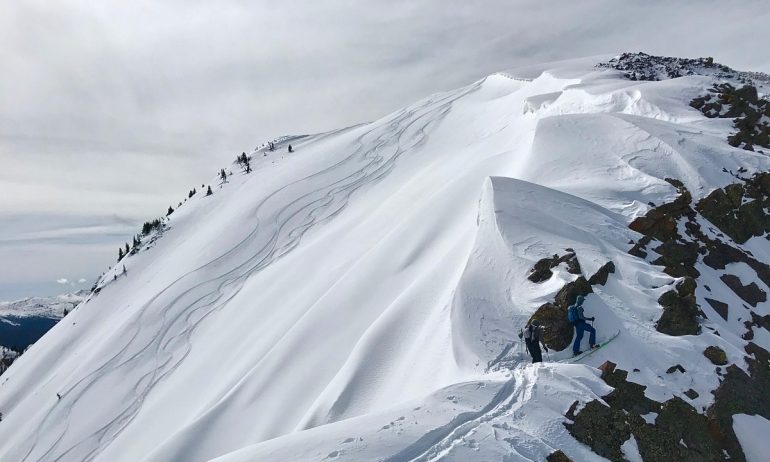As part of our Dynafit Tech Tips series, we bring you tips and how-tos to make sure you get the most out of your gear.
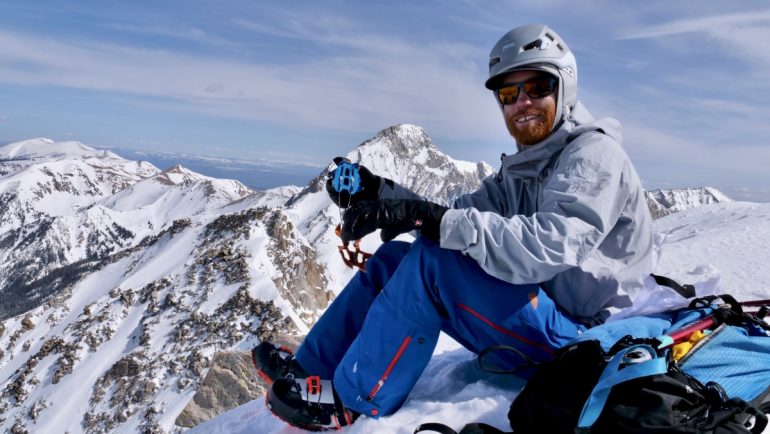
Happy feet, happy skier. I worked on this new Hoji Pro all of last season. It was perfect come spring ski mountaineering season. Photo: @bigmountaincreative
Home boot fitting and when to retire
Ski season is making a reluctant debut here in North America, yet I’m still excited from my head to my…calves. Yes feet, after a glorious six months of wearing sandals at any opportunity, it is time for you to bury yourselves in a Grilamid and closed-cell foam coffin for the next half annum. You will be cold, sweat profusely, and then be cold again. You will bear the brunt of 8-hour tours. Toes will be jammed, heels will slip. Skiing and ski touring are an awful lot to ask of you, so I will do my best to make your prison as accommodating as possible.
Timely and proactive boot work is crucial to a long and happy season, and ski career. I am writing this article as both a tip, and self motivating piece as I am currently slacking on a few fit issues. Ski boot fitting is a fluid process. I find that I will spend weeks making room, have a great fit for a month, and then slowly take up space for the remainder of the boots’ lifetime. Revisit WildSnow’s five basic boot fitting tips for sizing and fitting a new boot. If at all possible, do the initial fit with a professional boot fitter. They are worth every penny. The following tips are for maintaining a healthy fit throughout the life of the ski boot.
Early Season Woes
So you were happy with your boots at the end of the spring, and now the suckers are tormenting you as you seek out sharkless snow patches of early season. You have that 1-2 cm shell fit, and heat molded liner with upgraded footbed. What gives? For one, our bodies, including feet are constantly undergoing minute changes. Flat unsupportive summer footwear (I’m a flip flop addict) will allow our modern, support-dependent feet to spread. In a ski boot, minute changes are a big deal.
Consider the monstrous fit difference between 99mm and 103mm lasted ski boots. That four-millimeter spread can accommodate the vast majority of skiers. A single millimeter of spread in your feet or of extra callus from a summer of barefooting around camp and rock climbing will be noticeable. Yes, princess, you can actually feel that pea in there.
Shrinkage in the foot is also plausible if you were chronically dehydrated last spring and have since taken up water. The most likely scenario is that you simply haven’t mentally adjusted to the joys of ski boots yet.
Padding and Shimming
With an initial professional fit, the slight tweak should be in any skier’s repertoire. Early season snugness, whether physical or mental, should be given patience. It will only get looser. Calluses can be filed down. You can give up water again, or more prudently let the liner pack out. Looseness is easily remedied with a simple 1mm bontex board under the liner, or foam placement such as a small mustache pad behind the ankle or trapezoid in front of the lower shin.
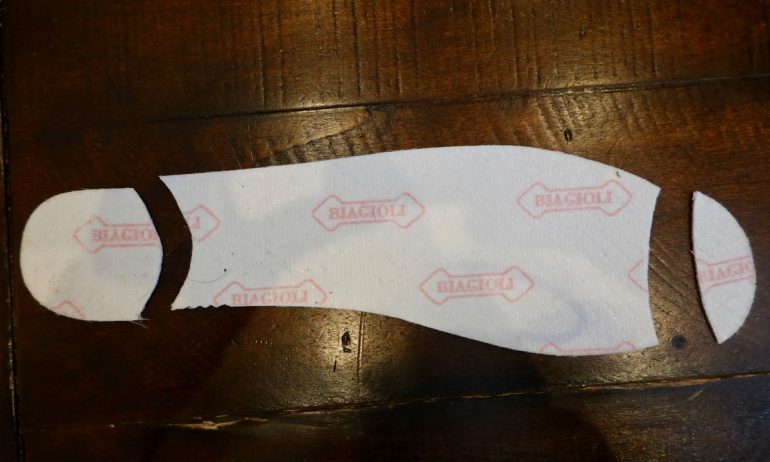
Boot shims should generally be placed in whole. Removing the heel portion can help keep the heel down. Slice off the toe part for already cramped or cold toes.
Don’t be afraid to experiment on your own if a boot has already been professionally fit. You know those alpine style ski straps made of nylon, velcro, and foam that go between skis? I’ve duct taped to my liner a very effective pad made out of that foam bit. Don’t have stack of bontex boot shims in your garage? Take some scissors to your Wheaties box and cut pieces slightly smaller than the size and shape of the bottom of your liner. Two-three pieces of cereal box duct taped together would be about the equivalent of a 1mm bontex board. I will often cut the heel portion off of a boot shim to keep myself in the heel pocket when tightness is needed in the rest of the foot. Tape the heel-less shim directly to the heel area of the boot board to prevent it from sliding back.
Be proactive and experiment with shims and pads to keep your feet happy, you can always remove these minor adjustments. I have pulled over in the middle of a ski mission and ripped out or adjusted a poorly placed pad. Your partners will understand.
Punching and Shell Mods
Shell modifications can and should be done early on. Your feet are not changing rapidly enough to warrant a punch after a half-season of skiing. It was either needed all along (then go for it, better late than never) or the liner has packed out. You should be able to pad around a bony protrusion to make it less prominent instead making enlargements to the shell. A wider or longer shell will allow for movement and will become a cyclical problem.
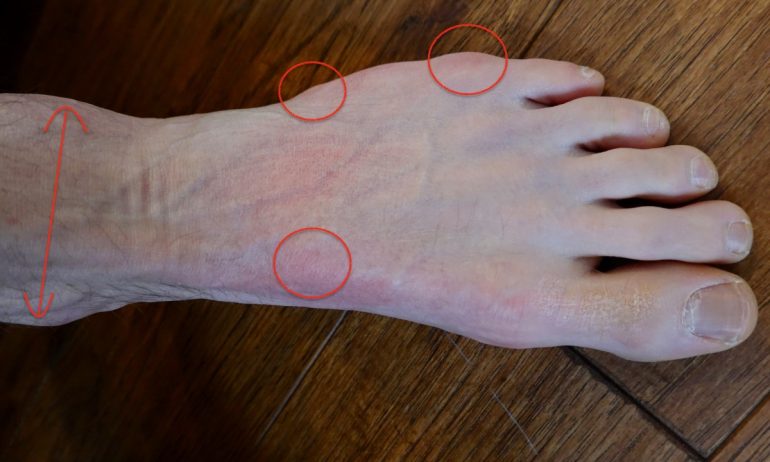
My problem spots are plenty but not uncommon: Navicular, both ends of the 5th metatarsal, and both malleoli. I will punch for one or more of these within the first few weeks, pad for the others.
New Liners
At a certain point, you’ll need a new liner. The number of days you can get out of a liner varies drastically based on quality of foam, time of outings, and torque on the liner (resort ski in your touring boots anyone?). Anywhere from 40-80 days can toast a lightweight liner. For contrast, a Zipfit liner I used in alpine boots for over 200 days while ski patrolling actually still lives on in a friend’s boot, pushing the 400-day mark. Say what you will about the hygenic decisions being made there, point is, light liners wear out faster. If you have shimmed and padded to no avail or have both looseness and hotspots at the same time, it is time to visit that boot fitter again and discuss a new liner. I have fit boots professionally, yet have creased a liner while DIYing a heat mold. This is easily prevented with two free hands that are not your own.
If you are fortunate enough to own a quiver of boots, or have an old liner laying around, try swapping liners in boots. A packed out liner from a beefy boot will often feel like a perfect fit in your new lighter, more trim slippers. The impressive weight of the four buckle Tecnica Zero G Tour Pro
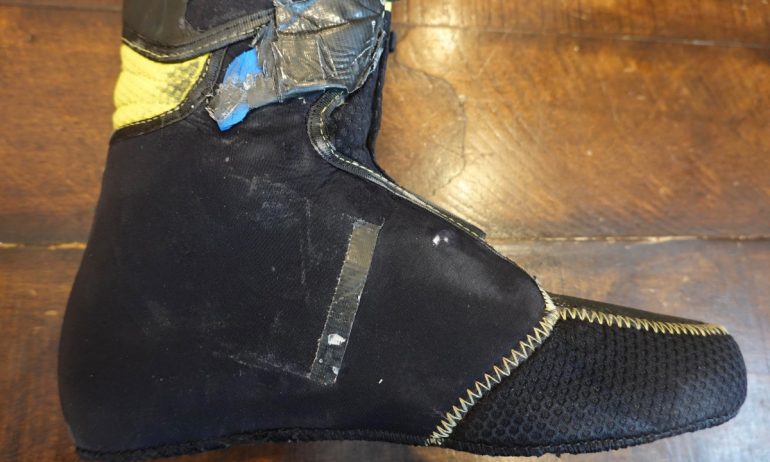
Ugly but effective. The small blue pad helped greatly with some inner ankle rubbing. Also notice the removed pad when this liner went from its original Tecnica Zero G Pro into an Alien RS.
Socks
Blisters are generally the result of fit issues that cause a sock to move against your skin. Therefore, a tight fitting sock, in addition to some padding, can really help you out. I have been an evangelist for compression socks for ski touring for some time, especially important with my impossibly skinny bird legs. Current favorite is the Dissent GFX Compression line. CEP have been great for me too. If you do get a blister, take a few days off of touring until it heals.
Ski Boot Retirement
With crafty and diligent work you can really push your horses past their riding days. Sometimes it is better to put them to pasture. The aforementioned Scarpa Alien RS have seen two big seasons pushing around a 106 mm ski. They are on their third liner, and the plastic is toasted. After a broken BOA system on one, I removed both and replaced with less comfortable Atomic cables that keep the foot tighter, resurrecting a smidge of performance. Despite my best efforts, I am coming to grips with the fact that they are done. I am constantly getting pitched over the front and bottoming out the flex, which also smashes my heels in to the heel cup where the third generation liner is essentially non existent. As with light liners, light plastics also have a shorter lifespan.
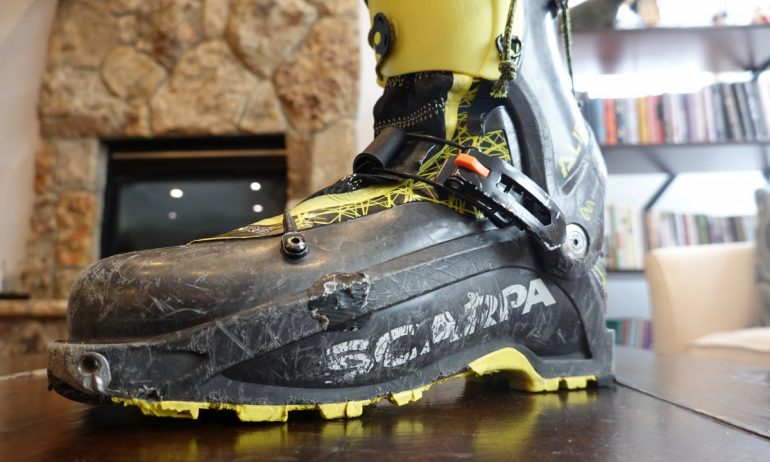
A once proud playground of successful boot work, soon to be relegated to ice climbing and resort fitness laps.
There is no perfect rule of thumb for when it is time for a totally new ski boot. If you are being injured by your boot, it is probably time. If the boot is a functional liability in the backcountry, also time. Consider the hours, money and passion you commit to skiing. Make an investment in yourself and the rest of your quiver. You’ll be shocked at how much you love your skis again when you can actually maneuver them. For those that don’t get out a ton, you may consider upgrading even if your boot is in decent shape. We have seen some incredible advancements over the past four years alone.
Take care of your feet; they are your vital connection to the ski and they sacrifice themselves day in and day out for your passionate pursuits. Acknowledge problems and jump on them right away. If a potential solution is reversible, there is no sense in at least giving it a shot. I have several friends with neglected bone spurs which become a surgeon’s problem instead of a boot fitter’s. We’d love to hear from pro and DIY bootfitters alike in the comments below. Do we have any podiatrist or lower leg orthopedic MD readers? Would especially love to hear from you folks. Here’s to a season of normal, non-damaging foot pain and cold powder skiing.
We are so excited to have Gary Smith join WildSnow as our official Gear Editor. He’s a regular contributor, and an avid backcountry skier and ski mountaineer residing in Eagle County, Colorado.
On March 22nd 2021, Gary Smith tragically died in an avalanche outside of Beaver Creek Resort in Colorado. Since 2018, Gary has been a frequent and insightful contributor to WildSnow. From Christmas Eve spent at the Wildsnow Field HQ cabin, to testing gear and sharing his love for steep skiing around the world, he was a pillar of the ski touring community and will be greatly missed.

